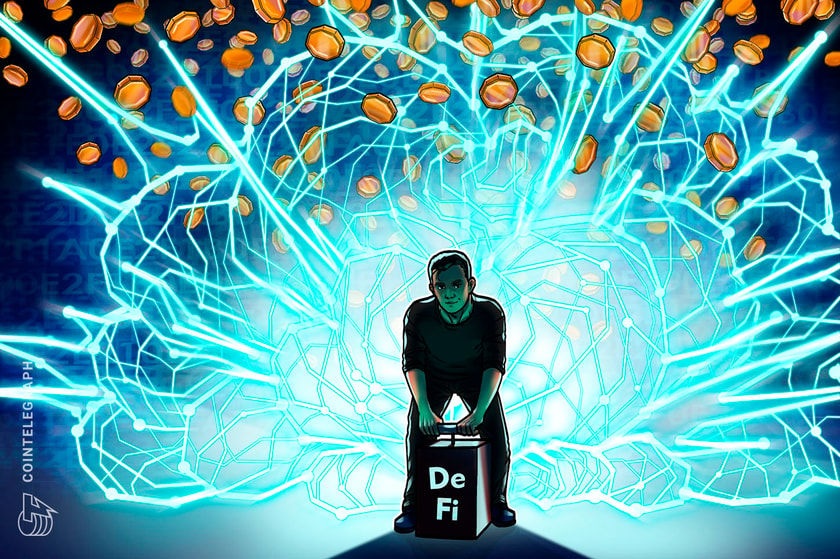The Bitcoin white paper was published 11 years ago today, on Oct. 31, 2008, meaning that Bitcoin (BTC) is celebrating its 11th year of existence. From its humble beginnings to over a $300 billion market capitalization in 2017, the success of Bitcoin is truly a remarkable accomplishment.
What is Bitcoin? A question with many answers. Digital gold, magic internet money, a hedge against macro risk, tulip mania? One thing is for certain, Bitcoin found a product–market fit as a new form of money owned by the people. The Bitcoin brand is well known around the globe, the userbase is growing fast, and it continues to attract developers to the ecosystem.
However, Bitcoin is not a panacea. When Satoshi first launched Bitcoin, he made design choices that were optimal for becoming a hard money with a limited attack surface at the cost of base-layer scalability and an expressive scripting language. One of those major choices was to implement a distributed proof-of-work (PoW) system to form network consensus. In other words, Bitcoin is great at being money but not very good at all the other potential use cases for a blockchain.
The lesson here is that design choices come with tradeoffs, and Bitcoin has already cemented its path. This leaves room open for alternative blockchain architectures to capture value in a different market — such as supply chain management, enterprise software, social media, voting, prediction markets and more.
Nonfinancial applications for a blockchain
Money is an important use case for a blockchain, but that is just the tip of the iceberg. Let’s walk through a few alternative use cases for a blockchain.
Supply chain management
A blockchain can be used to create a shared database that tracks the provenance of an item from raw materials all the way into the consumer’s hands. This is currently being tested in the fair trade industry and by grocery stores looking to prevent the spread of contaminated food.
Prediction markets on a blockchain
A prediction market enables users to bet on the outcomes of events — such as sports and elections. Due to the fact that public blockchains are “hard to stop,” they’re particularly well-suited for use cases that are quasi-legal. Prediction markets are a good example where they’re legal in certain jurisdictions and illegal in others. Currently, there are a handful of projects working on prediction markets, such as Auger and Gnosis.
Social media on a blockchain
Social media platforms are heavily dependant on the network effects of their user base. In other words, people want to use the platform that all their friends are using. This harsh reality has lead to monopolies like Facebook, which has made it so users can’t justify leaving to another platform due to the entrenched userbase. Facebook’s captive audience makes it easy for the company to take advantage of its users by censoring free speech and selling their private data to the highest bidder.
A blockchain-based social media platform could be engineered to prevent anyone from censoring someone’s speech. If we combine social media and digital identity on a blockchain, it’s possible to enable users to own their own data, which could be easily ported to a competitor platform. This shifts the balance of power back toward the individual — a huge win for humanity.
Proof-of-work has limited functionality
All of the above use cases for a blockchain would not be suitable for a PoW blockchain. Instead, these use cases (and many others) require more scalability on the base layer to provide faster transaction confirmation. Imagine a social media site where you had to wait one hour to “like” a photo.
The reality is, not enough people are innovating on the nonfinancial use cases for a blockchain. There are endless possibilities, and it’s time for the industry to shift focus in this direction.
Alternative consensus mechanisms (besides proof-of-work)
We’ve already established that there are many use cases for a blockchain besides money, and each of these use cases needs an alternative to PoW.
There are more than 40 known consensus mechanisms used with a blockchain, so let’s explore a few of the most common alternatives to PoW.
Proof-of-stake
With PoS, network participants put their capital (i.e., tokens) at risk to validate the blockchain. Bad actors of discouraged from acting maliciously toward the network because of the risk of losing their “staked tokens.”
PoS provides a slight improvement to scalability and lowers the requirement of resources used to secure the chain. PoS networks are at risk of so-called “black swan events” and they lead to a “rich get richer” economic paradigm.
Delegated proof-of-stake
In DPoS, network participants vote on a small number of delegates who maintain the ledger on their behalf. This structure is very similar to a representative democracy.
The reduced number of nodes leads to increased throughput in the network. DPoS networks risk becoming centralized and are particularly susceptible to a takeover by an oligarchy.
Besides PoW, PoS and DPoS, there is a long list of consensus mechanisms that are not widely used. Most are still experimental, and here are a few examples.
Proof-of-capacity
While it is similar to PoW, proof-of-capacity leverages available disk space (storage) instead of computing resources. This offers a more environmentally friendly alternative to PoW and is less vulnerable to specialized hardware allowing mining groups to centralize the network.
Hashgraph protocol
While technically not a blockchain, a hashgraph uses a directed acyclic graph, which enables similar use cases. In other words, a hashgraph uses a gossip protocol to spread information throughout the network, and a virtual voting mechanism to achieve consensus. Hashgraphs are supposed to be very scalable, as each device maintains its own “copy of the ledger” instead of sharing a single source of truth across every node.
Proof-of-participation
The goal of a proof-of-participation system is to ensure a blockchain is secure by each node participating in the maintenance of the network. Proof-of-participation will be well-suited for nonfinancial use cases, and details will be announced soon.
Let’s wrap up
PoW is great for Bitcoin (i.e., money) but falls short for other use cases of a blockchain. As demonstrated above, there are many ways to form consensus in a distributed network. With an industry as nascent as blockchain, it’s important we continue our research in an effort to discover novel blockchain architectures. New consensus mechanisms will unlock new use cases for blockchain technology. The sky’s the limit.
The views, thoughts and opinions expressed here are the author’s alone and do not necessarily reflect or represent the views and opinions of Cointelegraph.
Roberto Capodieci is the founder and CEO of Blockchain Zoo, and a renowned expert on blockchain technology. He started programming when he was just six years old, sold his first video game when he was 10 and opened his first IT company at 14. He is a first-mover in the blockchain sector, a prodigious speaker and was one of the first to apply the tech to supply chain management and trade finance. Roberto is also a specialist in lawful interception systems and big data analysis, and serves as a consultant to law enforcement agencies.









